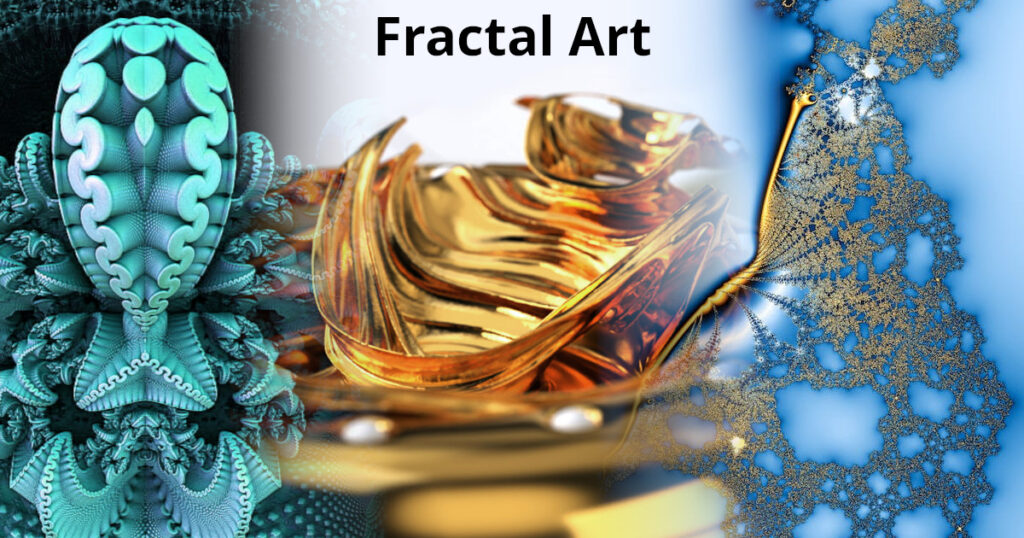
Sections of this article
- Fractal basics
- Why are fractals beautiful?
- What’s the difference between art and design?
- Examples of fractal art
- Our own fractal art
Introduction
After looking at the basics of what fractals are, some types, and some examples of their uses, I then explore beauty and aesthetics and how they relate to fractals and also to well-being.
I then go into detail about the differences between art and design, and how they apply to what people call “fractal art”, then looking at lots of examples, finishing with our own unique fractal creation.
Fractal Basics
What is a fractal?
A fractal is a complex geometric shape or pattern that displays self-similarity at different scales, meaning it exhibits similar structures or patterns regardless of the level of magnification. These intricate and often infinitely detailed formations are generated through mathematical equations and are prevalent in nature, art, and computer-generated graphics.
Fractals encapsulate the concept of chaos and order coexisting, offering a fascinating lens through which to explore the inherent complexity and beauty found in both mathematical abstraction and the natural world.
Types Of Fractals
Fractals, intricate and self-replicating geometric patterns, manifest in diverse forms across mathematics, nature, and art.
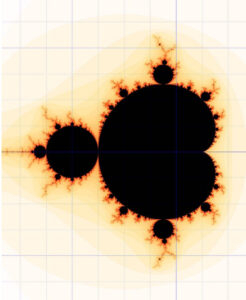
The earliest discovered type is the Mandelbrot set (above), characterized by endlessly complex patterns emerging from simple equations.
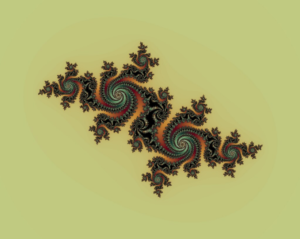
The Julia set (above), another iterated fractal, closely relate to the Mandelbrot set, displays unique shapes based on varying parameters. Fractals extend beyond mathematics, infiltrating natural phenomena like coastlines, mountains, and clouds.
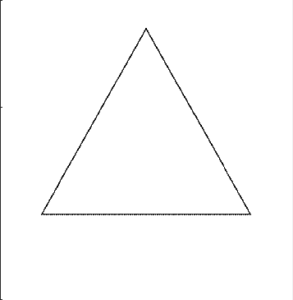
The Koch snowflake (above) exemplifies a geometric fractal with infinite self-replicating triangles, while the Sierpinski triangle recursively removes triangles to create a striking pattern. Fractal geometry finds applications in computer graphics, generating realistic landscapes and textures.
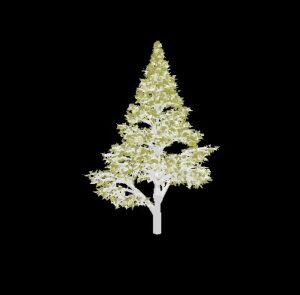
L-systems (above) produce branching structures, mirroring the growth of plants.
Fractals of many different types illuminate the interconnectedness between mathematics and the natural world, providing a captivating glimpse into the complexity inherent in seemingly simple structures.
Fractals Used In Science And Technology
Fractals play a pivotal role in science and technology, serving as powerful tools across various disciplines. In medicine, fractal analysis aids in studying the intricate and irregular patterns of biological structures, such as blood vessels and cardiac rhythms, offering insights into physiological processes. Fractal-based algorithms enhance image compression and data analysis, enabling more efficient storage and retrieval of information.
In telecommunications, fractals are employed in the design of antennas and signal processing, optimizing communication systems for increased efficiency and signal strength. The self-replicating nature of fractals finds applications in creating efficient and compact antennas for wireless devices, enhancing connectivity.
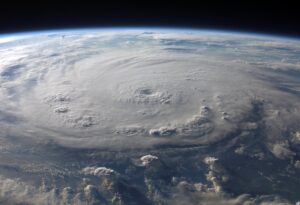
Furthermore, fractals are instrumental in the simulation and modeling of natural phenomena, from weather patterns to the growth of plants. In climate science, fractal geometry helps scientists analyze and predict complex weather systems. Additionally, they find utility in the oil and gas industry for the simulation of porous rock structures, aiding in resource exploration and extraction, as well as in predicting stocks and shares.
In technology, fractals contribute to the generation of realistic computer graphics, enabling the creation of lifelike landscapes and textures. They are also utilized in encryption algorithms and data security, adding complexity to codes for enhanced protection.
Overall, the application of fractals in science and technology underscores their versatility and significance in understanding, simulating, and optimizing complex systems across various domains.
Why Are Fractals Beautiful?
First, why is anything beautiful or ugly?
What Is Beauty?
“The most beautiful thing we can experience is the mysterious. It is the source of all true art and science.” Albert Einstein. Fractals have a sort-of “alien” quality to them. They are often intuitively natural and yet have a somehow otherworldly mystery to them.
When I say “beauty”, I am talking here about aesthetics in general, rather than just which humans are more attractive to other humans.
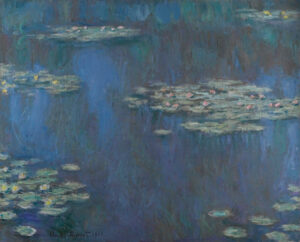
Beauty and ugliness are partially subjective concepts deeply rooted in individual perspectives, cultural influences, and societal norms. Beauty often encompasses qualities admired for their harmony, symmetry, balance, color, complexity, transcending physical appearances. It resonates as a positive, uplifting force that captivates and inspires.
On the contrary, ugliness is often linked to perceived imperfections, disharmony, or deviations from conventional standards. However, the notion of ugliness is also partially subjective, as it may derive to a significant extent from societal biases and cultural conditioning. What one culture deems as beautiful, another may label as unattractive.
Both beauty and ugliness coexist in a delicate interplay, reflecting the diversity of human experiences. Appreciating the contrast between them allows for a richer understanding of aesthetics and the intricacies of human perception. Ultimately, the boundaries between beauty and ugliness are, to some extent fluid, shaped by personal perspectives, cultural contexts, and the ever-evolving nature of societal ideals, while also having a universal objective component.
Why Fractals Are Beautiful
As well as harmony, symmetry, balance, color, complexity, “fractality” is agreed to be a component of beauty.
Our brain loves patterns. We have a super developed gift of pattern recognition. And fractals are a culmination of a pattern within a pattern within a pattern.

People tend to like things which are familiar, and most of the natural world is made of fractals. Similarly, people tend to find attractive things which are similar to themselves, and human bodies, as part of the natural world, have lots of fractal properties.
Fractals captivate the human eye and mind with their innate beauty, transcending traditional notions of symmetry and the usual view of simplicity. Their charm lies in their combination of simplicity and complexity, on the fascinating edge between order and chaos. All art can be analyzed in terms of setting up a repetitive pattern and then breaking it. Too much repetition is boring, but too much chaos is confusing and difficult to relate to. Fractals bridge that polarity, having ever-changing yet intuitively acceptable patters based on relationships which are similar but not identical.
The delicate balance of repeating patterns and unpredictability creates a visual harmony that resonates with our innate sense of aesthetic appreciation. Fractals echo the complexity found in nature, from the branching of trees to the coastline’s irregularities, forging a profound connection between mathematical abstraction and the organic world. In art, science, and technology, fractals inspire creativity, providing a visual language to express the beauty inherent in complexity, offering a unique window into the wondrous intricacies of our universe.
How Beauty And Fractals Relate To Well-Being
Why do fractals promote positive mental health? . . . Because most of nature is made of them, it has been suggested that our brains are actually evolved to positively respond to them, and viewing fractal patterns has been shown to alter the way that the brain functions and the patterns of brain waves that are produced, resulting in a reduction in stress of 60%.
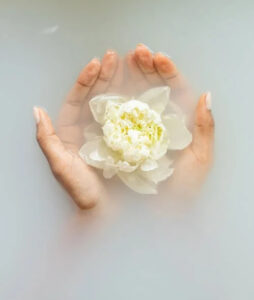
Aesthetics, the study of beauty and sensory experiences, is intricately tied to well-being. Environments, objects, and experiences that are aesthetically pleasing have a positive impact on mental and emotional states. Beautiful surroundings, whether in nature or art, can reduce stress, elevate mood, and enhance overall happiness.
Incorporating fractals in architectural designs can mitigate visual strain and discomfort caused by Euclidean spaces and reduce stress, resonating with the biophilic idea of humans’ innate connection to nature. For example, patients recover more rapidly from surgery if their room has a window looking out on nature.
Aesthetic preferences vary, but the pursuit and appreciation of beauty contribute to a sense of fulfillment and connection. Personalized aesthetics empower individuals to create spaces that resonate with their identity, fostering a positive atmosphere and promoting a holistic sense of well-being by nurturing the harmony between one’s surroundings and inner emotional landscape.
This may be related to the fact that aesthetics, to some degree aligns with functionality. For example . . . I remember hearing the expert presenter at an airshow saying that if an airplane looks beautiful then it will probably fly well.
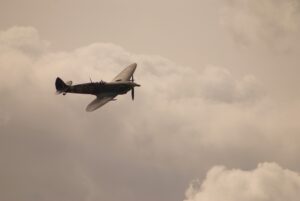
What’s the difference between art and design?
Fractal art, like photography, was greeted by skepticism initially, then later became an accepted part of the art world. Here is what is believed to be the earliest surviving camera photograph, taken circa 1826:
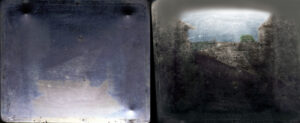
Art and design, while intertwined, serve distinct purposes and embody different processes. Art is a form of creative expression driven by individual inspiration, often emphasizing emotion, conceptual ideas, and personal interpretation:
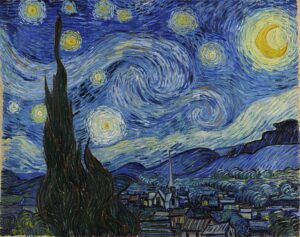
Conversely, design is a purposeful and intentional process aimed at solving problems or fulfilling specific objectives. It involves creating functional and aesthetically pleasing solutions within defined constraints, often driven by user needs, functionality, and efficiency. Design is inherently practical, considering usability and the communication of a specific message or functionality.
There are broadly agreed characteristics that define art:
- Art is enjoyed for its own sake, not for it’s practical usefulness.
- Art is focused more on aesthetics than on functionality.
- Art goes deeper than decoration (Decorative arts are defined as design)
- Art has special focus
- Art is unique
- Art is creativity relating to conceptual ideas used as a means to communicate, evoke emotions and present challenge perspectives and concepts.
- Art is personal . . both in terms of being personal to the individual who created it, and in terms of who made it mattering to the viewer.
Like beauty, these characteristics have some degree of subjectivity. For a lot more details on each one of these points, see my article “Are watches art?”
What people call “fractal art” is almost always things that are enjoyed for their own sake, focusing on aesthetics, have a special focus, and are unique. So to distinguish art from design, the main areas to consider are:
Is it decorative or intrinsic? There are plenty of people adding a fractal image to the face of an otherwise standard watch, or other object, but that’s a lot more decorative than intrinsic (and thus is design rather than art). The same is true of the results of a lot of collaborations between watchmakers and artists, with the art often being a decorative addition to the dial of an otherwise standard watch.
Is it a personal exploration that conveys some fascinating concept or emotion? Artists create a series of artworks, exploring and developing their own personal style, and have an interest in what they are conveying or evoking. If you look at a fractal image and can recognize which individual created it, then that is at least some way towards being art rather than design, unlike the more generic fractal posters which could have been made by anyone in the same way that it doesn’t matter who made a design that functions well . . . if someone else had made something which functions similarly, that would be equally useful.
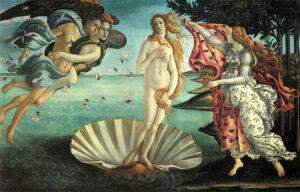
As usual, rather than just telling you my opinion, I have given you the understandings to decide for yourself what is art and what is not. So you can now think for yourself . . . don’t just believe what others tell you on the subject.
Examples Of Fractal Art
Most people are familiar with beautiful 2D fractal images, such as these:
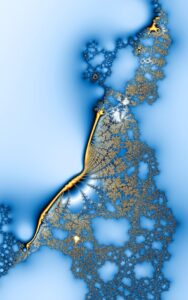
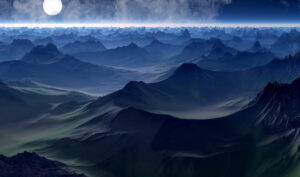
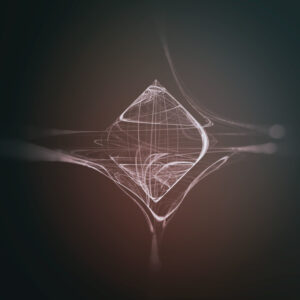
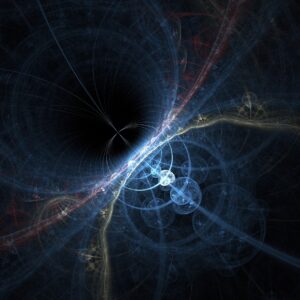
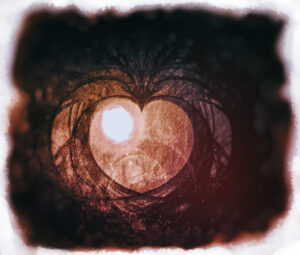
And more recently, there has been an explosion of beautiful 3D fractal images such as these:
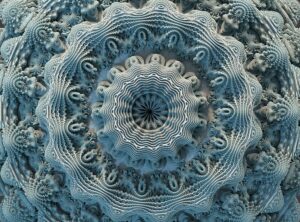
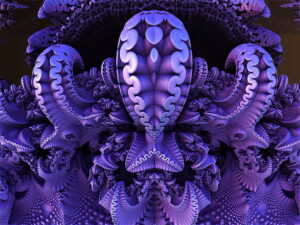
Art Which Uses Fractals
Most artworks have some degree of fractal nature. Marks made by a brush are usually fractal, with the fractal nature of the marks being used as a significant part of the focus for artists like Monet and J. M. W. Turner as well as in many examples of Asian brush calligraphy, especially the larger pieces.
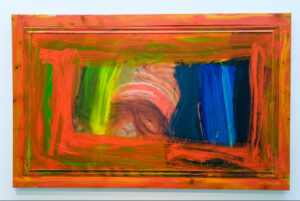
Many abstract artists use obviously fractal marks, such as Franz Kline (below), Howard Hodgkin (above) and Mark Rothko.
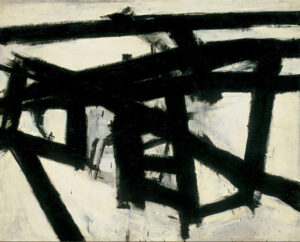
Since the natural world is composed mostly of fractals, most landscape painters could be seen as fractal artists. Painters have long been drawn to the allure of natural landscapes, using their brushes to convey the beauty and serenity of the outdoors. One such luminary is Thomas Cole, a key figure in the Hudson River School, known for his sublime depictions of the American wilderness in works like “The Oxbow.” (below).
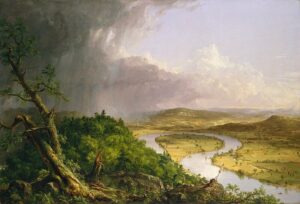
The Dutch painter Jacob van Ruisdael, active in the 17th century, captured the pastoral beauty of landscapes with meticulous detail, influencing generations of landscape artists with his nuanced compositions (below).
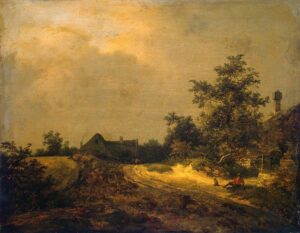
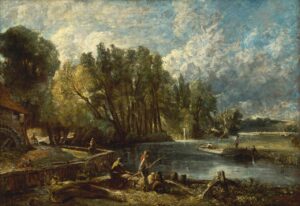
In the 19th century, the prolific John Constable depicted the English countryside with a keen eye for detail and a deep connection to the rural landscape. His masterpiece, “The Hay Wain,” exemplifies his ability to infuse scenes with a sense of tranquility and natural beauty. Another great example is his “Stratford Mill” (above).
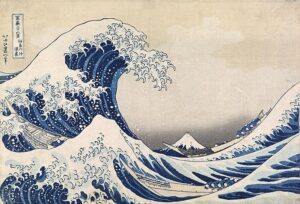
Other examples of fractals in art include da Vinci’s Turbulence (1500), Hokusai’s Great Wave (1830, above), and M.C. Escher’s Circle Series from the1950s. One of the best known examples of fractal expressionism is found in Jackson Pollock’s dripped patterns (below). It is also interesting to note that fake Pollock paintings can be distinguished from genuine ones by the different properties of the fractals they use.
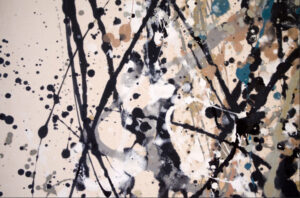
Yves Klein, a French artist associated with the Nouveau réalisme movement, used fractals indirectly in his artwork. His exploration of the infinite and the void, as seen in his iconic blue monochromes, resonates with the concept of infinity found in fractals. Klein’s artistic philosophy embraced the sublime and the boundless, echoing the endless complexity inherent in fractal patterns:
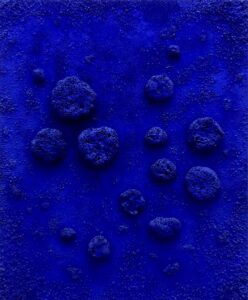
Digital artist Scott Draves created the Electric Sheep, a collaborative and evolving screensaver that generates abstract fractal animations. Users contribute to the evolving “flock” by voting on their favorite animations, influencing the future iterations. Draves’ work demonstrates the collaborative and generative potential of fractals in the digital realm, allowing for an ever-expanding and diverse visual landscape.
British artist William Latham collaborated with mathematician Stephen Todd and computer scientist Peter Todd to create “The Organic Art of William Latham,” a series of computer-generated images that explore the possibilities of genetic algorithms and fractal geometry. These evolving and organic forms demonstrate the fusion of art, mathematics, and technology.
American digital artist Vicky Brago-Mitchell incorporates fractals into her work, exploring the interplay between chaos and order. Her pieces, often created using fractal-generating software, showcase intricate patterns and vivid colors, highlighting the captivating visual appeal of fractals in the digital art space.
Japanese artist Makoto Nakamura blends traditional Japanese art techniques with fractal geometry to create mesmerizing paintings.
Fractal art pioneer Janet Parke has been creating intricate fractal-based works since the 1980s. Her pieces often feature vibrant colors, intricate details, and a sense of cosmic wonder. Parke’s exploration of fractals has significantly contributed to the development and recognition of fractal art as a unique genre.
Photography Of Fractal Subjects
Nature is mostly fractals. So any artist who photographs nature is really doing a form of fractal art.
Photographers who capture the essence of trees often create compelling visual narratives that celebrate the beauty, majesty, and symbolic significance of these arboreal wonders. One such luminary is Ansel Adams, renowned for his black-and-white landscapes, including iconic images of towering trees in the American West like the “Jeffrey Pine, Sentinel Dome.” Many of his famous images which immortalize the grandeur of the American West, include obviously fractal subjects, such as “Adams The Tetons and the Snake River” below . . .
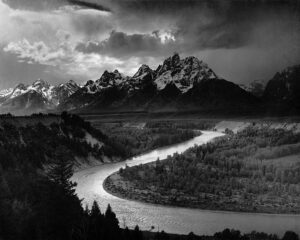
The works of Sebastião Salgado, a master of environmental photography, showcase trees in their natural habitats, telling stories of ecosystems and human-nature connections. His series “Genesis” includes striking images of ancient trees, offering a poignant reflection on the interconnectedness of life.
Notably, Beth Moon’s “Portraits of Time” series captures ancient and mystical trees from around the globe, creating ethereal portraits that transcend time. Her meticulous compositions reveal the resilience and wisdom embedded in these living monuments.
Renowned for his evocative portrayals of the American landscape, Edward Burtynsky captures the impact of human industry on nature. His large-scale works, such as those documenting industrial extraction and manufacturing, prompt reflection on the delicate balance between progress and environmental sustainability.
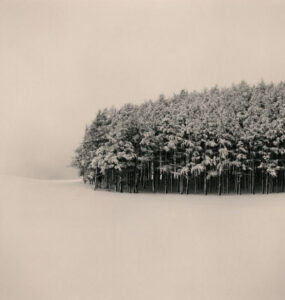
These photographers, along with contemporaries like Art Wolfe and Michael Kenna (above), have not only mastered their craft but have also deepened our connection to the planet by translating its magnificence into visual poetry through their lens.
Exhibitions Of Fractal Art
Artists exploring fractals, such as Janet Parke, showcase vibrant and intricate pieces that captivate audiences with their intricate details and mesmerizing patterns. Fractal art exhibitions provide a unique space for viewers to engage with the convergence of mathematics and creativity, fostering a deeper appreciation for the inherent beauty found in complexity.
These exhibitions also highlight the versatility of fractal art, with artists utilizing various mediums, including digital platforms, traditional prints, and even installations. The immersive nature of fractal art exhibitions offers a contemplative space for reflection, inviting viewers to explore the intersection of science, mathematics, and artistic expression in a visually stunning and intellectually stimulating manner.
Movies Which Use Fractals
Movies often incorporate fractals in visual effects and design, leveraging these intricate geometric patterns to create captivating and otherworldly scenes. Fractals offer a tool to simulate natural phenomena and generate complex, visually striking landscapes.
The lava in Starwars which Obi-Wan Kenobi and Anakin Skywalker were fighting near, used fractal techniques, and another science fiction creation, Guardians of the Galaxy Vol 2 (2017), used fractals in its creation.
One notable example is the use of fractals in the film “Inception” (2010), directed by Christopher Nolan. The movie explores dreamscapes and utilizes fractals to depict ever-folding, kaleidoscopic cityscapes, enhancing the surreal and mind-bending nature of the narrative.
The film “Dr. Strange” (2016), part of the Marvel Cinematic Universe, employs fractals in its depiction of the mystical and multidimensional realms. The fractal-like landscapes and reality-bending sequences visually manifest the magical and otherworldly elements of the narrative.
Beyond these examples, fractals contribute to the creation of alien worlds, cosmic landscapes, and surreal environments in various science fiction and fantasy films. Their use allows filmmakers to push the boundaries of visual storytelling, immersing audiences in imaginative and visually stunning cinematic experiences. The incorporation of fractals adds a layer of complexity and beauty to the visual language of cinema, enhancing the overall impact of these fantastical narratives. A fractal landscape, generated using Terragen 3, is shown below:
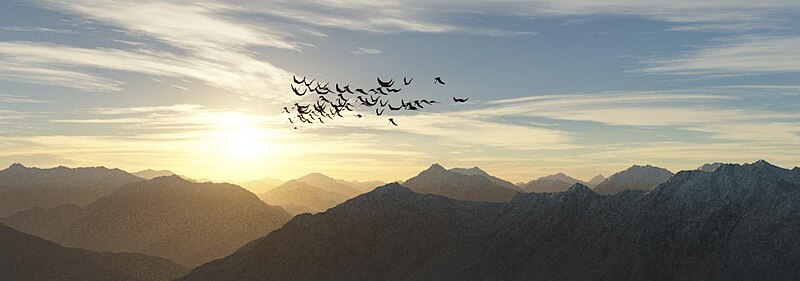
The Increasingly Fractal Nature Of The Timing Of Changes In Movies
Another fascinating use of fractals in the movies is the timing of various types of changes, which has evolved into an increasingly fractal nature, reflecting intricate patterns of storytelling and visual dynamics. Filmmakers now intricately weave nonlinear and fragmented narratives, resembling fractal structures with self-similar patterns at different scales. This approach engages audiences by challenging traditional timelines, revealing plot details in a non-linear fashion, and fostering a deeper connection to the unfolding story.
Movies like Christopher Nolan’s “Memento” (2000) and Quentin Tarantino’s “Pulp Fiction” (1994) exemplify the fractal nature of temporal structures. These films present narratives with fractured timelines, requiring viewers to piece together the story’s puzzle.
The trend extends to genre-bending works like “Cloud Atlas” (2012), directed by the Wachowskis and Tom Tykwer, where multiple interconnected storylines unfold across different time periods. This fractal approach to temporal storytelling reflects a dynamic shift in filmmaking, challenging traditional chronologies and offering audiences a more intricate, engaging, and intellectually stimulating cinematic experience.
Fractal Sculpture And Jewelry
Fractal sculptures are manifested in a range of materials, from metal and wood to glass and stone, capturing the self-repeating patterns inherent in fractals. Artists like Bathsheba Grossman utilize 3D printing technology to create intricate fractal sculptures with a perfect blend of precision and artistry. While many of his beautiful mathematical sculptures are not actually fractal, at least one of them is . . . his “Menger Sponge” sculpture in laser etched glass and 3D printed steel.
In the realm of jewelry, designers draw inspiration from fractals to craft intricate and ornate pieces. Whether in the form of pendants, earrings, or rings, these jewelry items celebrate the delicate balance between complexity and elegance. The fusion of mathematical precision and artistic creativity in fractal jewelry and sculpture reflects a harmonious collaboration between science and art, offering admirers a tangible and wearable appreciation for the beauty found in mathematical intricacies.
A great example is designer Marc Newson, who used a Julia fractal to design a necklace of 2,000 diamonds and sapphires that took artisans 1,500 hours to build. You can see that the necklace is not actually symmetrical, but still has a beautiful sense of balance.
Fractal Watches
There’s only one fractal watch I can find made before ours, that I would classify as high quality. The Itay Noy Fractal collection uses a 2D fractal image on the dial of each watch.
Another interesting use of the fractal concept of self-similarity is a tourbillon that is made of smaller tourbillons: “Tourbillon of Tourbillons” by Antoine Preziuso, which features a ten-minute tourbillon driven by three sixty-second tourbillons, in a fascinating example of recursion (a property of fractals) in watchmaking.
There is another watch which is a world’s first . . .
Our Own Fractal Art
The world’s first 3D fractal watch.
I’ve always been fascinated by fractals, and loved exploring them, initially with software I wrote myself from example algorithms I found in places like Scientific American magazine, and later using various fractal software.
I worked with fractals in both a fine art context, and the field of music and sound-generation algorithms, and was excited to find such a beautiful 3D fractal as the basis of the watch we’re launching with . . .
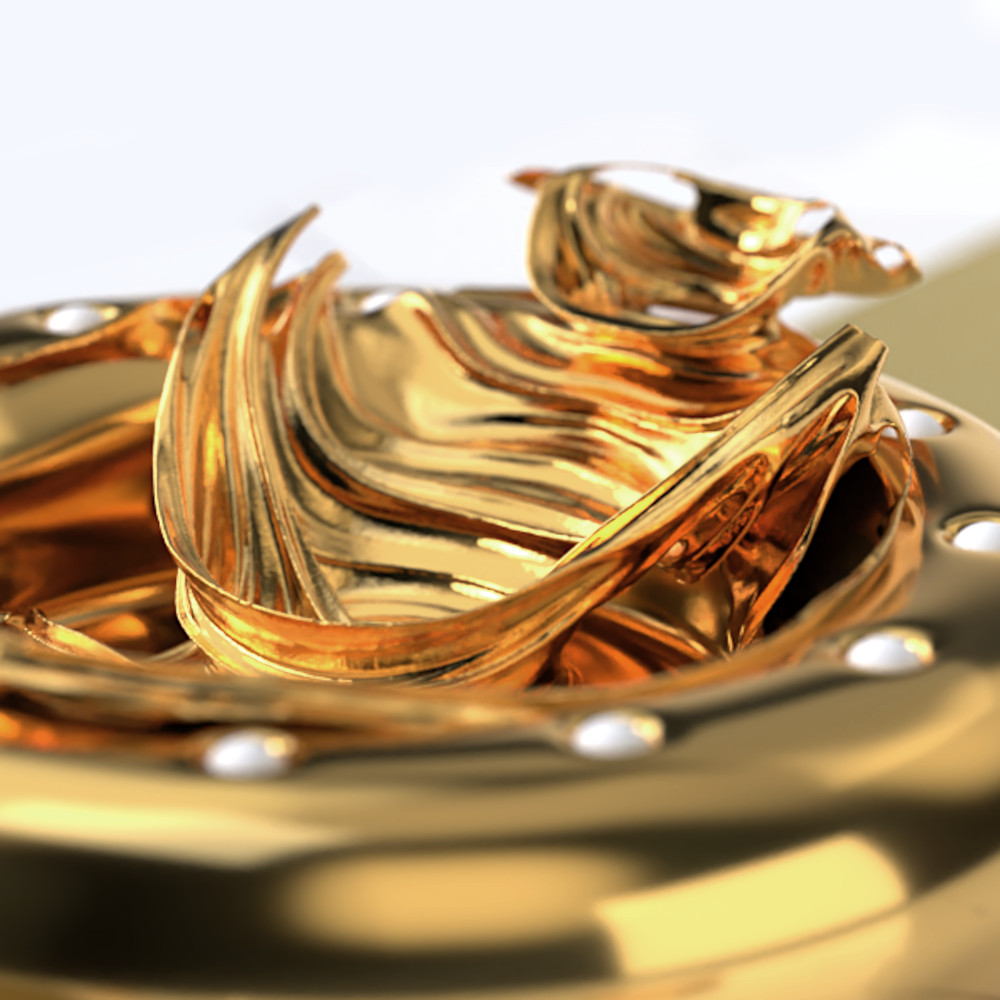
Fractal Emergence (above) is the watch we’ll be launching with, so . . .
Don’t miss our launch!
What is your favorite fractal art and why? Tell us in the comments below . . .

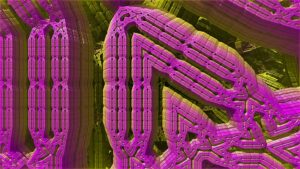
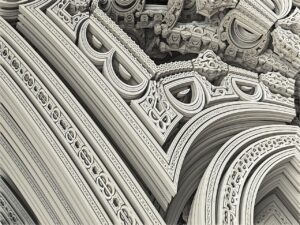
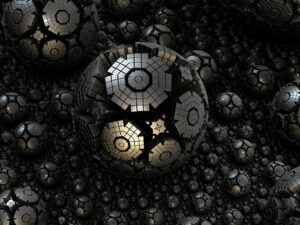
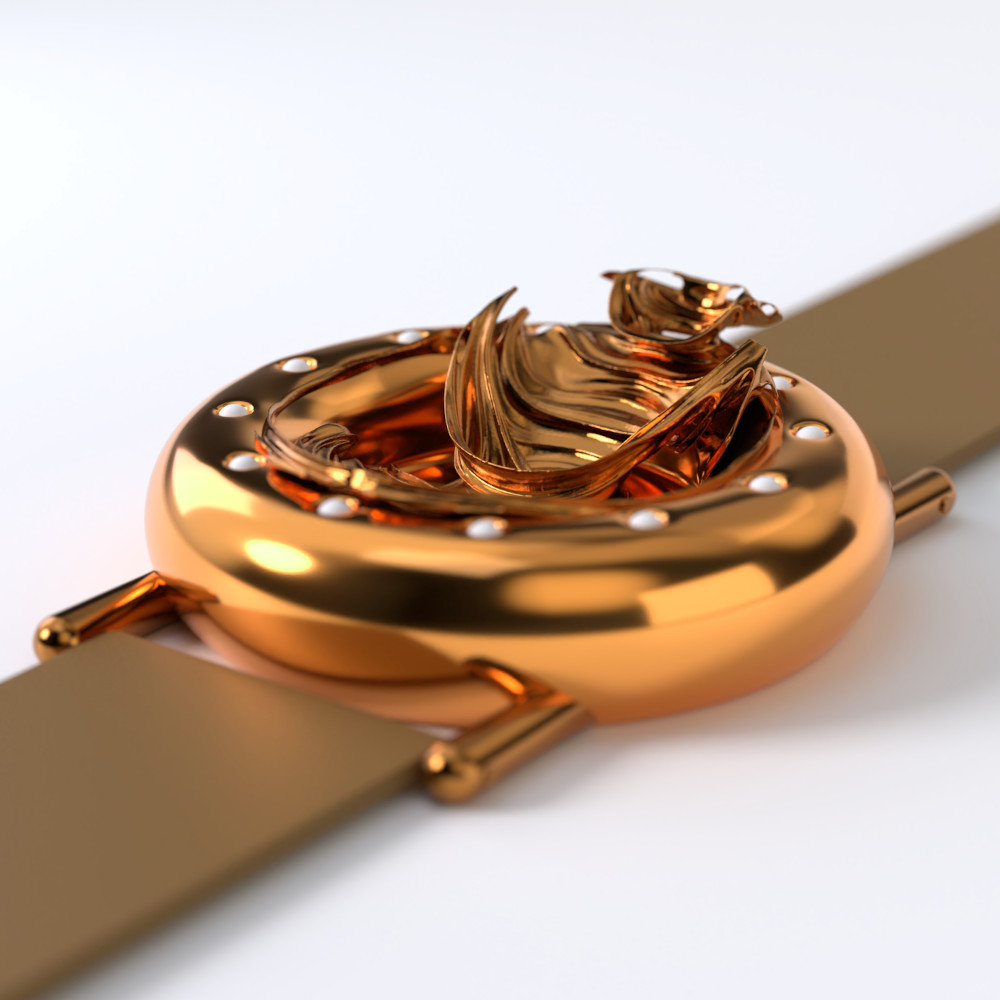

Leave a Reply